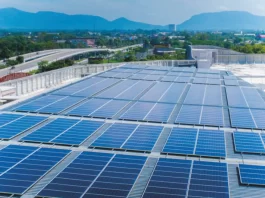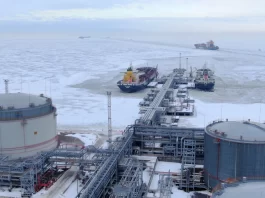Scientists at Tyumen State University (TyumSU) have developed a mathematical model of the effects of steam cycles on high-viscosity oil. According to the authors, the development will enable the reservoir’s thermal energy to be used as efficiently as possible, increasing the amount of oil that can be taken without the need for additional resources. The study results have been published in the journal “Transformation of the Oil and Gas Complex 2030.”
Fossil fuel extraction is increasing by two to three million barrels per day annually. Scientists at TyumSU highlight that this extraction rate must be maintained to support the industry’s growth.
Some countries are beginning to extract high-viscosity oil from reserves studied less extensively than traditional oil fields. Because it flows significantly more slowly from the reservoir, special methods such as steam injection are necessary for extraction. According to scientists, steam warms the oil, reduces viscosity, and enhances flow properties.
The steam-cyclic impact happens in stages. Initially, steam is pumped into the oil reservoir through the well; then, the well is closed while the steam condenses in the reservoir, reopened to recover the oil. According to experts, the efficiency of all stages of technology is directly proportional to their duration.
TyumSU researchers calculated the time required for each stage of the steam-cyclic effect on a reservoir containing HVO. They created a unique mathematical model for this technique.
Because of the use of mass balance equations, the TyumSU model, unlike others, does not require a significant volume of input information. It is not necessary to know the parameters at every place in the reservoir to use it, and such knowledge is not available to oil and gas corporations. Typically, with sufficiently large inaccuracy, only the parameters of individual reservoir sections from which rock samples are gathered for research are known, said Alexander Gilmanov, Senior Lecturer at TyumSU’s Department of Modelling of Physical Processes and Systems.
He underlined that any field can use the created mathematical model to calculate the duration of the stages of the steam-cyclic effect with specified reservoir parameters. According to the researchers’ calculations, adopting ideal technological parameters increases oil output by about 10% per cycle while maintaining the same costs. Furthermore, this strategy applies to fields in any country.
Scientists intend to model steam-cyclic impact using horizontal wells in the future.
The growing proportion of hard-to-recover reserves in the worldwide structure of raw resources, particularly heavy oil with a viscosity of 30 mPa*s and more, is a defining characteristic of contemporary oil production. These kinds of oil have reserves of at least one trillion tonnes, more than five times the quantity of low- and medium-viscosity oil that is still recoverable. Heavy oil is seen as the main foundation for future growth in oil output in many industrialised nations.
The countries with the highest heavy and bituminous oil deposits include Kuwait, China, the United States, Canada, and Venezuela. Significant hard-to-recover reserves resources are also available in Russia, making up around 55% of the country’s total oil reserves. high-viscosity oil reserves in Russia can be found in Tatarstan, Bashkortostan, Udmurtia, and the Perm Region. More than two-thirds of all high-viscosity oil deposits are located at depths of up to 2000 metres; the greatest are Van-Egan, North-Komsomolsk, Usinsk, Russian, Gremikhinsk, and others. The oil extraction industry has a lot of important problems to solve right away, like getting HTR oil out of the ground, transporting it to places where it can be collected and prepared, and preparing it to make finished goods.






